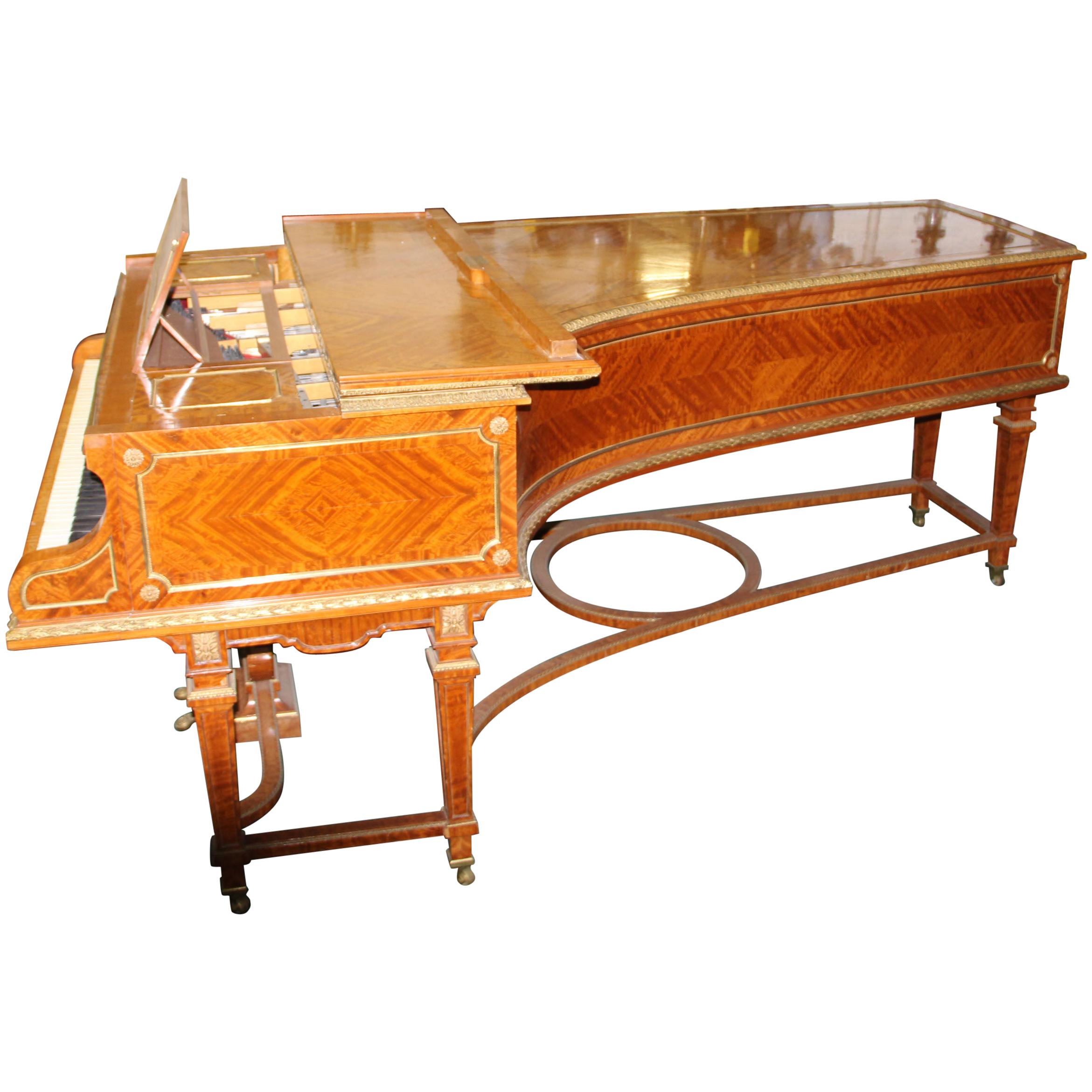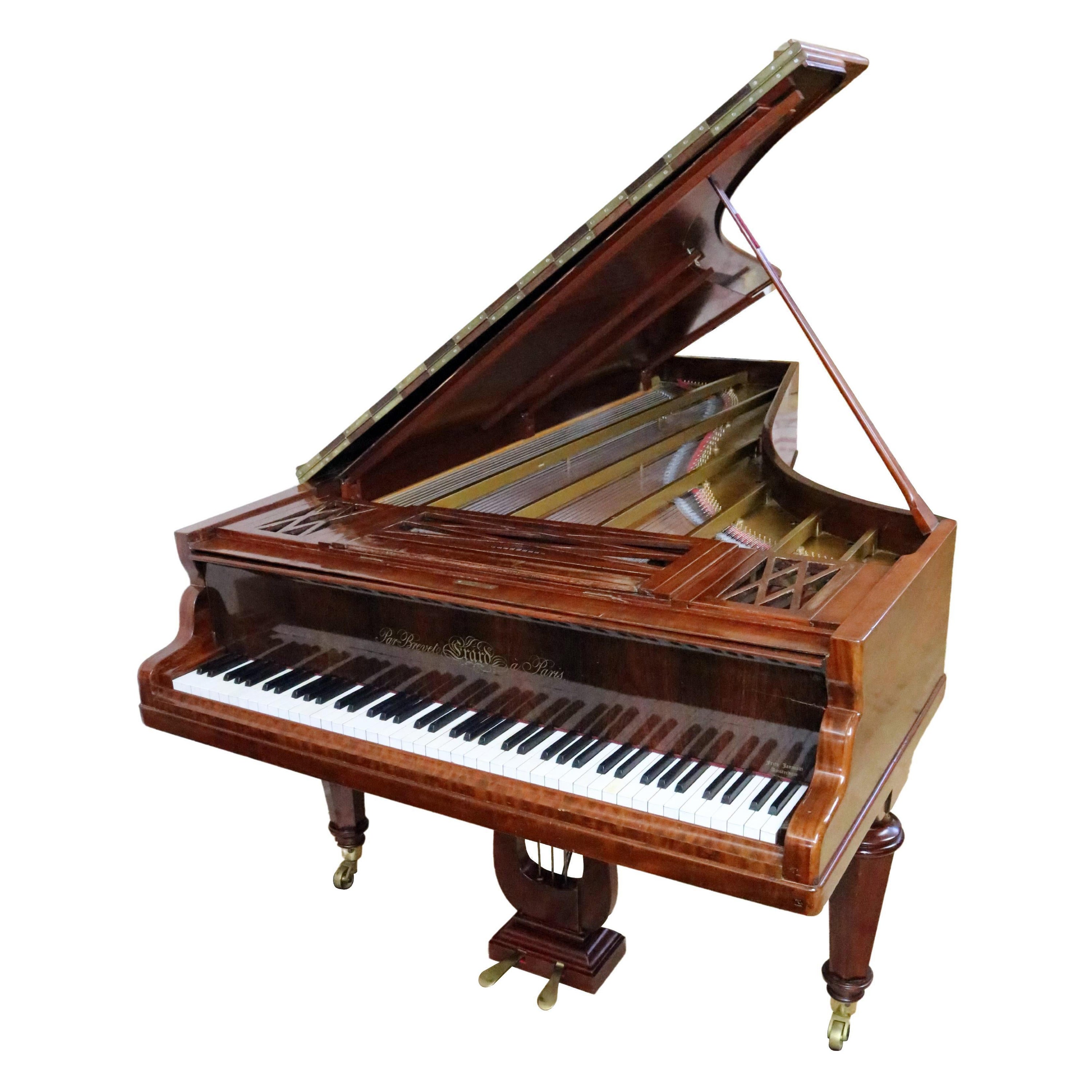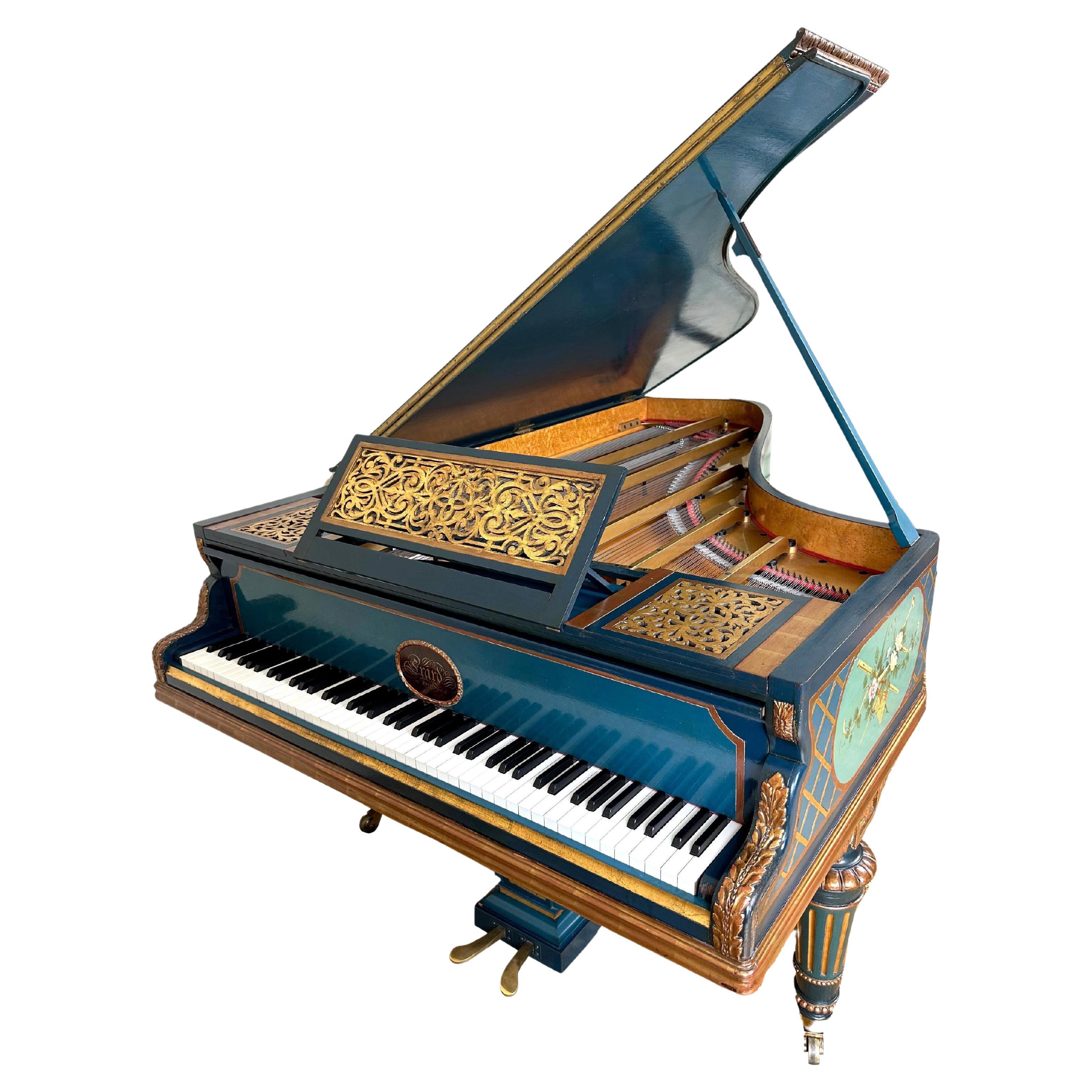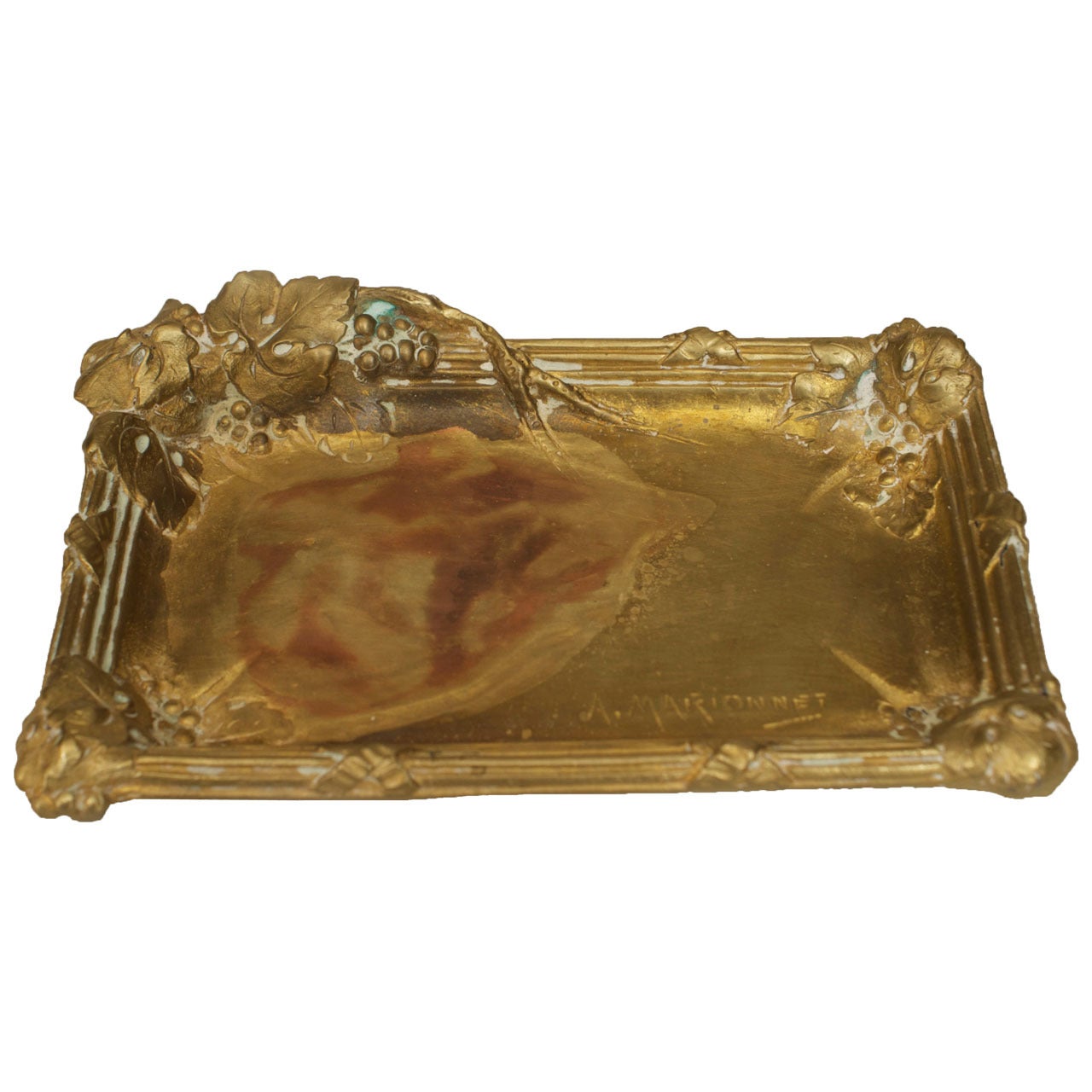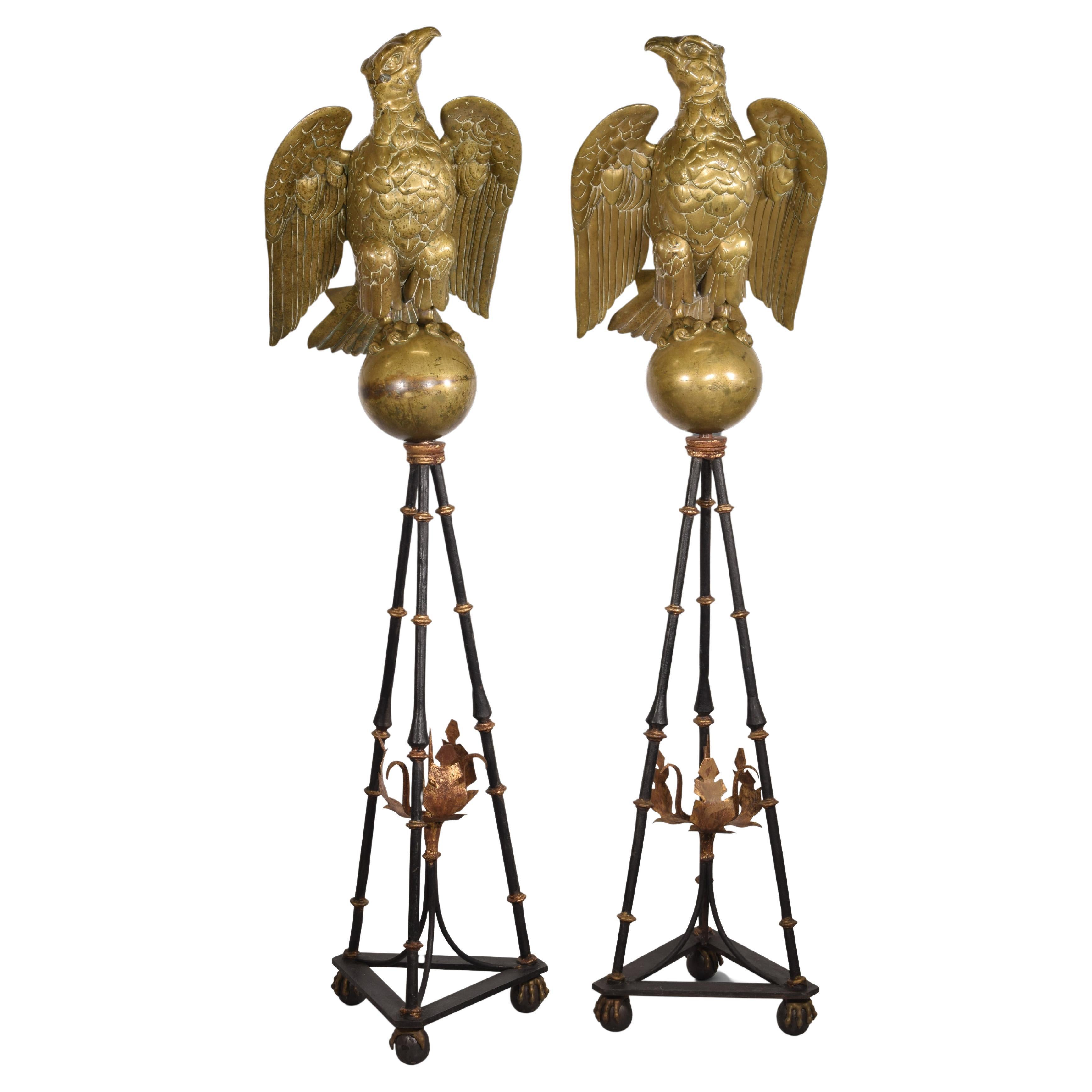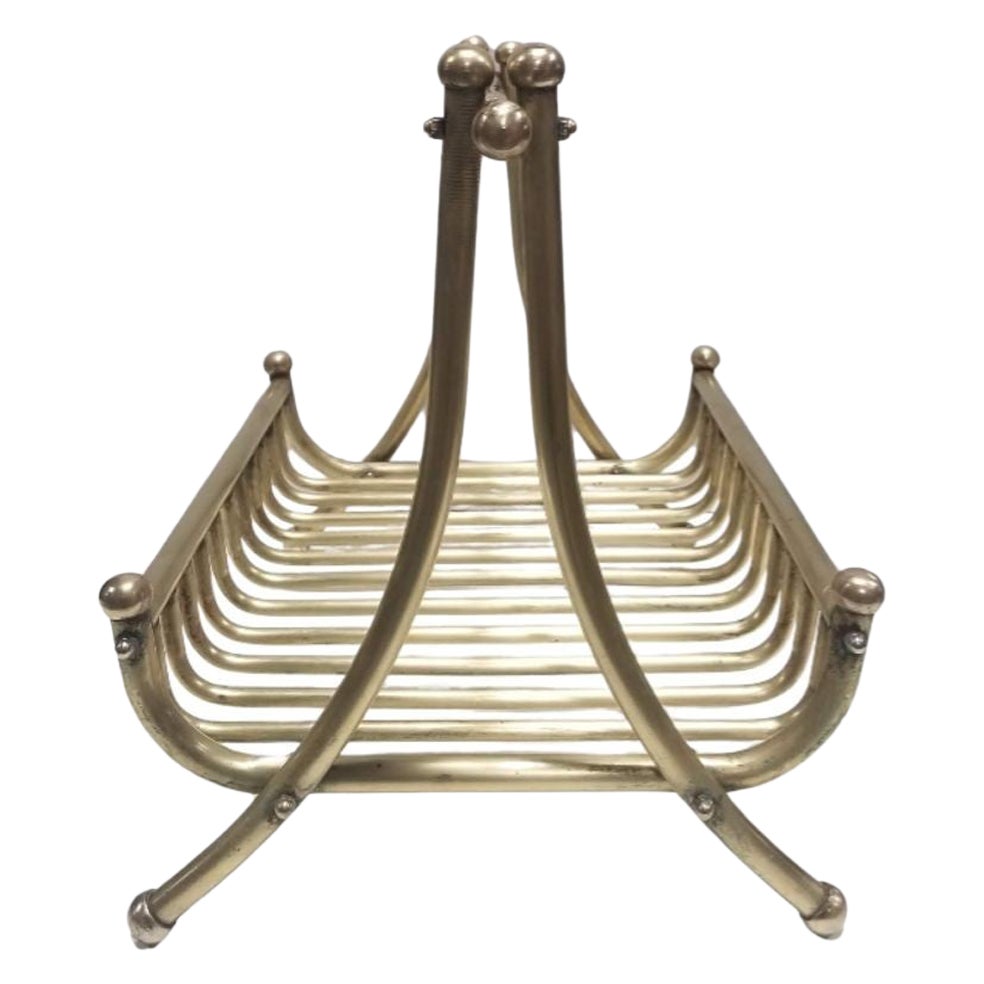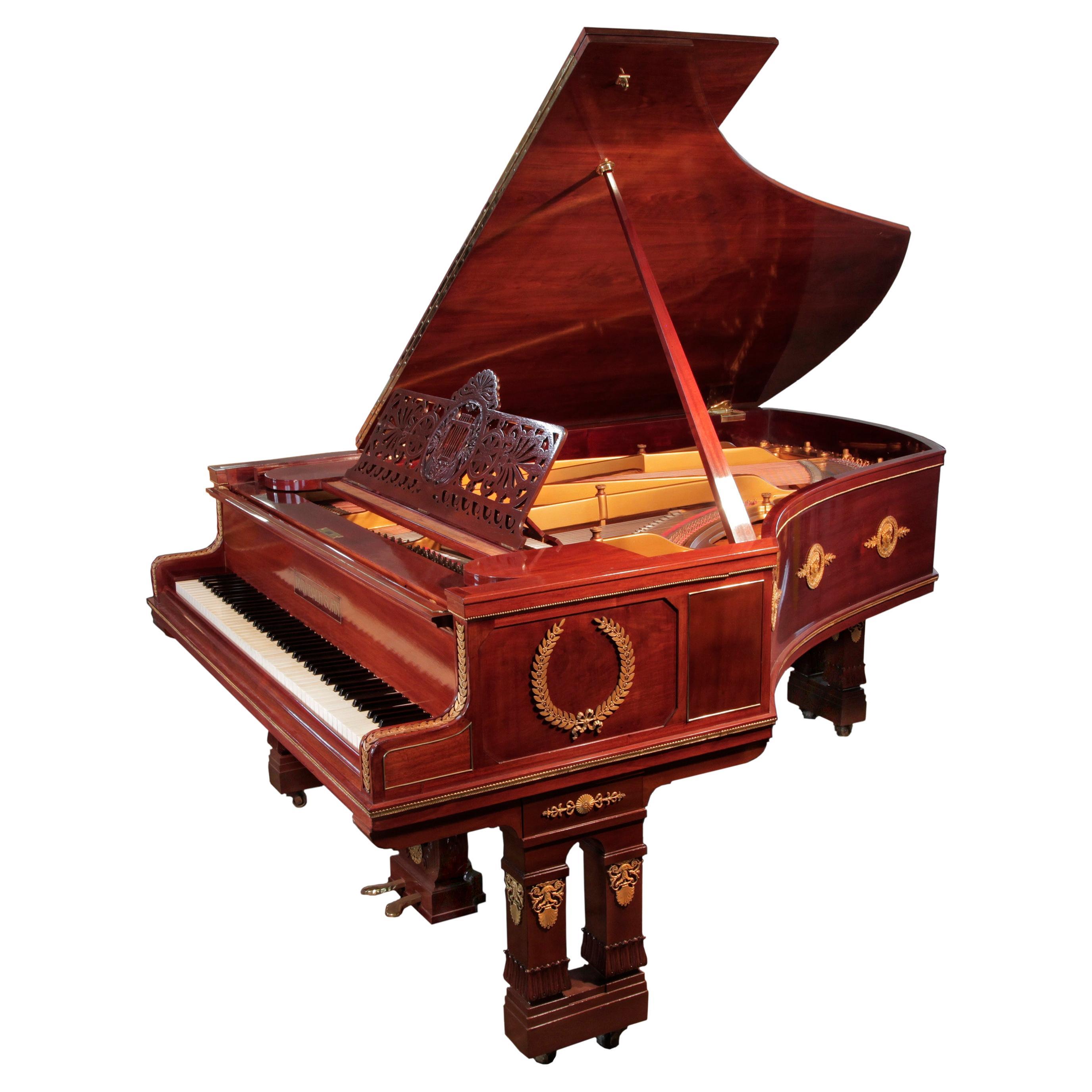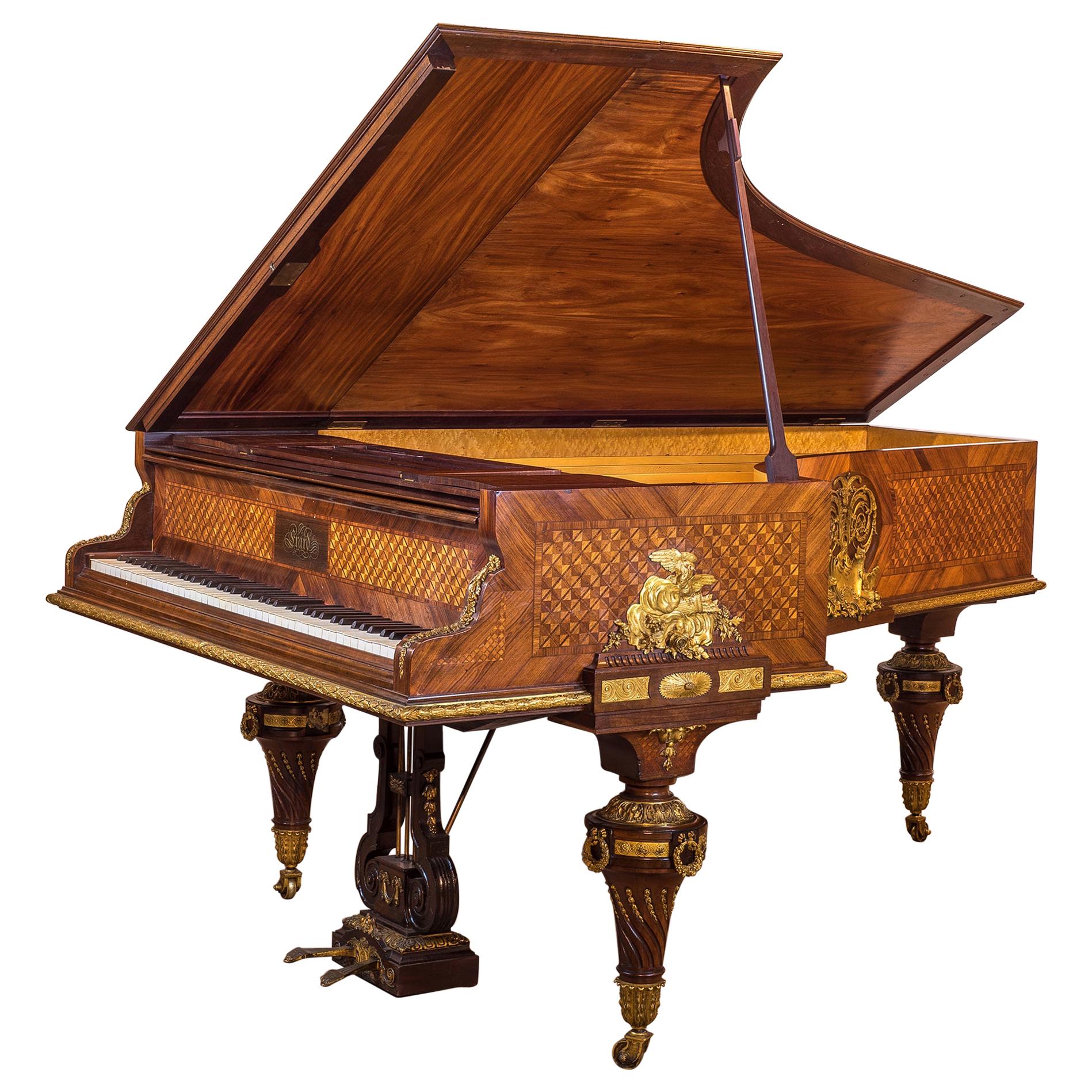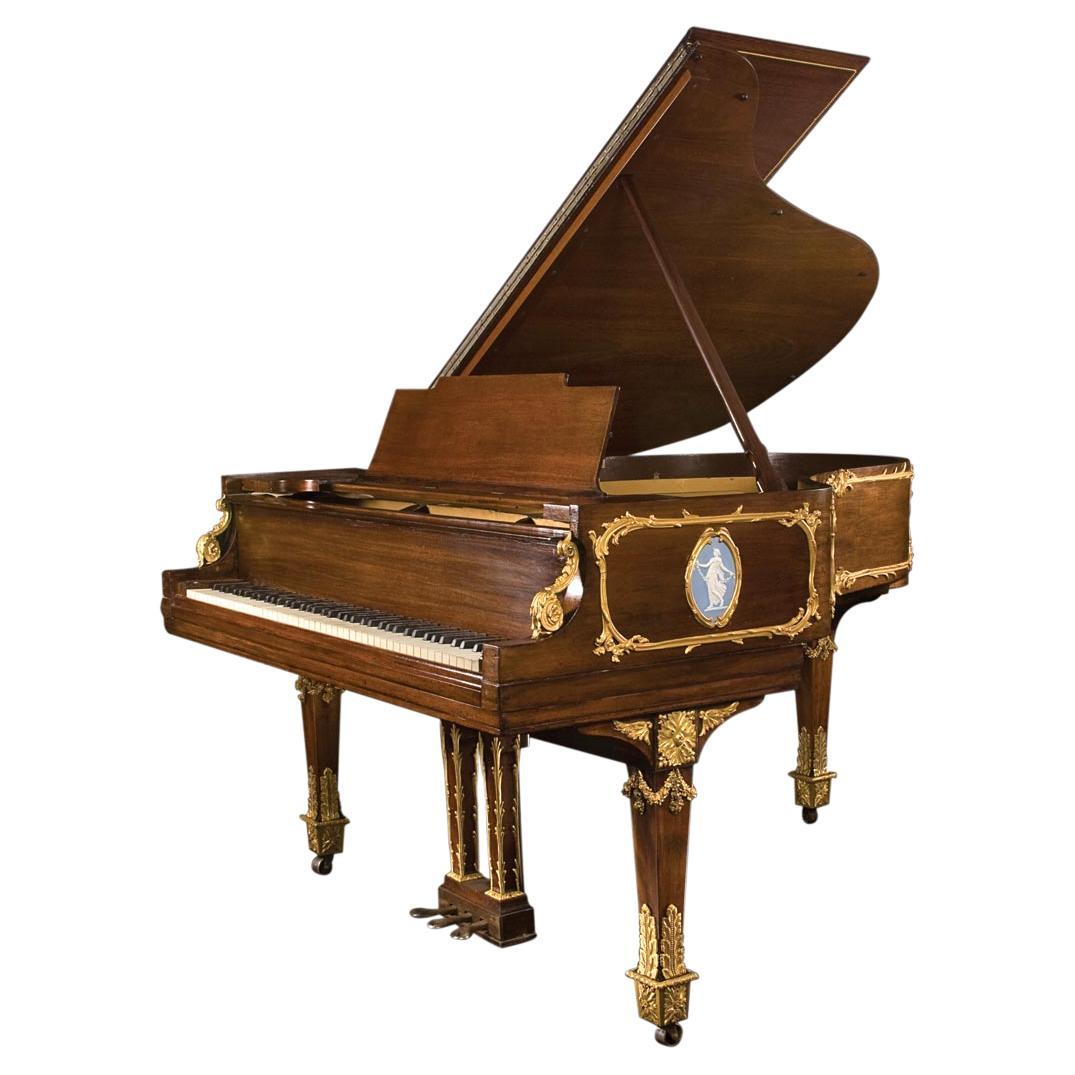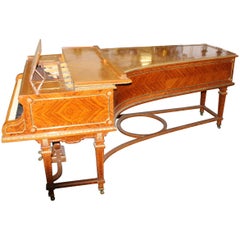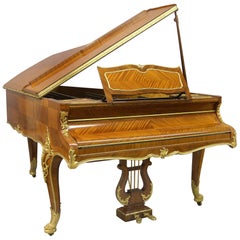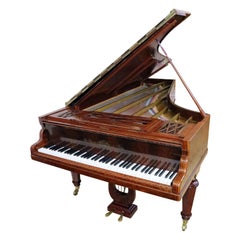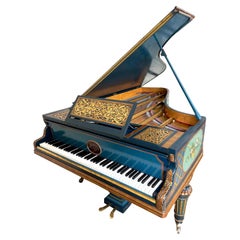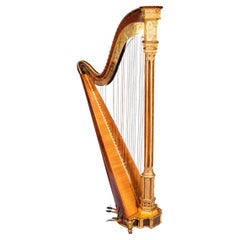
Wonderful Turn-of-the-Century Gilt Bronze-Mounted Grand Erard Piano
View Similar Items
Want more images or videos?
Request additional images or videos from the seller
1 of 10
Wonderful Turn-of-the-Century Gilt Bronze-Mounted Grand Erard Piano
About the Item
- Creator:Sébastien Érard (Cabinetmaker)
- Dimensions:Height: 40 in (101.6 cm)Width: 55 in (139.7 cm)Depth: 85 in (215.9 cm)
- Style:Belle Époque (Of the Period)
- Materials and Techniques:
- Place of Origin:
- Period:1900-1909
- Date of Manufacture:circa 1905
- Condition:Wear consistent with age and use. The piano needs to be refinished.
- Seller Location:New York, NY
- Reference Number:Seller: CC11231stDibs: LU90563450052
About the Seller
5.0
Vetted Seller
These experienced sellers undergo a comprehensive evaluation by our team of in-house experts.
Established in 1924
1stDibs seller since 2010
70 sales on 1stDibs
Associations
The Art and Antique Dealers League of AmericaAntiques Associations Members
More From This SellerView All
- Wonderful Turn of the Century Gilt Bronze Mounted Six-Leg Grand Erard PianoBy Sébastien ÉrardLocated in New York, NYA wonderful turn of the century gilt bronze mounted Louis XVI style six-leg Grand Erard piano Beautiful satinwood veneer, bronze mounts, standing on six legs centered by a stretcher. The movement stamped with Erard serial number 93712 and patent stamps, the interior of the case further stamped F. TURBEC/A LEMOINE, and M. BECKER. Erard is the oldest and most prestigious French piano manufacturer. The firm was founded by Sebastian Erard...Category
Antique Early 1900s French Belle Époque Musical Instruments
MaterialsBronze
- Fine Early 20th Century Gilt Bronze Mounted Grand Erard Piano by François LinkeBy François Linke, Sébastien ÉrardLocated in New York, NYA very fine early 20th century Louis XV style gilt bronze mounted three-leg Grand Erard piano. By François Linke. Beautiful quarter veneered case inlaid with cartouche panels surmounted by a hinged lid, with great quality pierced foliate bronze mounts running down each leg, finishing off with lion paw feet. Signed F. Linke to the bronze clasp on the side leg, The movement stamped with Erard serial number 97037 and patent stamps, the interior of the case further stamped F. TURBEC/A LEMOINE. Erard is the oldest and most prestigious French piano manufacturer. The firm was founded by Sebastian...Category
Early 20th Century French Belle Époque Musical Instruments
MaterialsBronze
- Wonderful 19th Century Gilt Bronze Mounted Vitrine by Joseph ZwienerBy Joseph-Emmanuel ZwienerLocated in New York, NYA wonderful late 19th century Louis XV style gilt bronze mounted vitrine by Joseph Zwiener. Joseph Zwiener The serpentine-shaped brèche d’ alep marble top above a single centered glass door, flanked to each side by a conforming panel, the mirrored interior fitted with three adjustable glass shelves, the canted angles set with pierced foliate-cast clasps, above a bombé shaped apron, on cabriole legs with scrolled-acanthus sabots. The quality of the cabinetry and solid wood frame, along with the quality and design of the mounts, is characteristic of Zwiener’s oeuvre. Similar flower-filled cornucopia chutes can be found on other Zwiener models. Born in Herdon, Germany, in 1849, Joseph Emmanuel Zwiener followed the tradition of some of the best ébnistes of the nineteenth century. He moved to Paris establishing a workshop at 12, rue de la Roquette, between 1880 and 1895. He produced a wide array of the very finest furniture, modelling in his own interpretations of the eighteenth century Louis XV Rococo style, veneered with the highest and finest quality marquetry and ‘Vernis Martin’ panels. Exhibiting at the Exposition Universelle, Paris, in 1889, Zwiener was awarded a gold medal for what the jury reported as ‘dè ses dèbuts à une Exposition Universelle, [il] s’est mi au premier rang par la richesse, la hardinesse, et le fini de ses meubles incrustés de bronze et fort habilment marquetés.’ Zwiener was closely associated with François Linke, and the two houses produced work which, at first glance, is remarkably similar and with occasionally identical mounts. The similarities are made more likely by the fact that the brilliant sculptor, Léon Messagé, worked initially for Zwiener and subsequently, upon Zwiener’s departure for Berlin to work on furniture commissioned by Freidrich Wilhelm II , he was employed in the workshop of François Linke. It appears that Zwiener, unlike Linke, did not sign all his work, although some stamped pieces with his name and/or his “Z” initial are documented. There is some uncertainty between the recorded stamp E. Zwiener and the work of a Julius Zwiener...Category
Antique Late 19th Century French Belle Époque Cabinets
MaterialsMarble, Bronze
- Wonderful 19th Century Gilt Bronze Mounted Vitrine Table by Joseph ZwienerBy Joseph-Emmanuel ZwienerLocated in New York, NYA wonderful late 19th century gilt bronze Mounted Louis XV style Vitrine table by Joseph Zwiener Joseph Zwiener The oval shaped table with a beveled glass top encircled by a bronze frieze, above four side glass panels, the canted angles set with pierced foliate-cast clasps, standing on cabriole legs tapering to scrolled sabots. Born in Herdon, Germany, in 1849, Joseph Emmanuel Zwiener followed the tradition of some of the best ébnistes of the nineteenth century. He moved to Paris establishing a workshop at 12, rue de la Roquette, between 1880 and 1895. He produced a wide array of the very finest furniture, modeling in his own interpretations of the eighteenth century Louis XV Rococo style, veneered with the highest and finest quality marquetry and ‘Vernis Martin’ panels. Exhibiting at the Exposition Universelle, Paris, in 1889, Zwiener was awarded a gold medal for what the jury reported as ‘dè ses dèbuts à une Exposition Universelle, [il] s’est mi au premier rang par la richesse, la hardinesse, et le fini de ses meubles incrustés de bronze et fort habilment marquetés.’ Zwiener was closely associated with François Linke, and the two houses produced work which, at first glance, is remarkably similar and with occasionally identical mounts. The similarities are made more likely by the fact that the brilliant sculptor, Léon Messagé, worked initially for Zwiener and subsequently, upon Zwiener’s departure for Berlin to work on furniture commissioned by Freidrich Wilhelm II , he was employed in the workshop of François Linke. It appears that Zwiener, unlike Linke, did not sign all his work, although some stamped pieces with his name and/or his “Z” initial are documented. There is some uncertainty between the recorded stamp E. Zwiener and the work of a Julius Zwiener...Category
Antique Late 19th Century French Belle Époque Vitrines
MaterialsBronze
- A Wonderful Late 19th Century Gilt Bronze Mounted Louis XVI Style DeskLocated in New York, NYA Late 19th Century Gilt Bronze Mounted Louis XVI Style Desk A leather top above a single bronze mounted drawer, centered bronze motif depicting a pair of rams centered by cornucopi...Category
Antique Late 19th Century French Belle Époque Desks and Writing Tables
MaterialsBronze
- Wonderful Late 19th Century Gilt Bronze Mounted Guéridon by François LinkeBy François LinkeLocated in New York, NYA Wonderful Late 19th Century Louis XV Style Gilt Bronze Mounted Guéridon By François Linke François Linke – Variant to Index no. 146 The beautiful alabaster fiorito top above the ...Category
Antique Late 19th Century French Belle Époque Gueridon
MaterialsAlabaster, Bronze, Ormolu
You May Also Like
- Erard Parallel-Strung Grand Piano, Paris, 1845By Sébastien ÉrardLocated in Littleton, COThis Erard parallel-strung grand piano, crafted in Paris in 1845, has been extraordinarily well-tended, restored and maintained, enduring today as not only a spectacular example of the pinnacle of 19th Century piano design - characterized by its innovative construction and exceptional sonoral qualities - but also as a premium instrument by the most advanced modern standards, concert-ready for world-class, discriminating performers and their audiences. Erard was a renowned piano manufacturer established by Sébastien Erard, and for much of the 19th Century, the company produced some of the most exquisite and innovative European pianos of the era. The sound produced by this parallel-strung grand piano is characterized by a clarity and transparency that distinguishes it from its contemporaries. The parallel arrangement of strings contributes to a more direct transfer of sound energy, resulting in a balanced and articulate tone across the instrument's registers. This piano's tone is beloved for its sweetness in the treble range and a robust quality in the bass, while also allowing for an especially nuanced and expressive interpretation of the musical repertoire of its era. The ebony and ivory keyboard is a testament to the meticulous attention Erard paid to the tactile experience of playing. Each key is precision-weighted, providing a responsive touch that allows the pianist to articulate a wide range of dynamics and expressiveness. An interior faux tableau latches to the outer case lid in an open position for maximum concert volume, and rests in a lowered position to maintain a softer, more muted experience. The year 1845 places this Erard instrument in the heart of the Romantic era, a period marked by a surge in musical creativity and emotional expression. Composer/performers like Chopin and Liszt were drawn to Erard grand...Category
Antique Mid-19th Century French Romantic Musical Instruments
MaterialsWood
- Erard Parallel-Strung Grand Piano with Bench, Paris, 1895By Maison Erard, Sébastien ÉrardLocated in Littleton, COThis beautiful grand piano was built by Erard in Paris in 1895. With irreplaceable original cabinet art created and signed by an artist named Finel - specifically commissioned by th...Category
Antique 1890s French Romantic Musical Instruments
MaterialsMetal
- Early 19th Century Parcel Gilt Gothic Revival Harp By Sebastian ErardBy Sébastien ÉrardLocated in Dublin, IEA very fine and elegant Regency Satinwood and parcel-gilt double action Harp from the workshop of the famous harp and piano maker Sebastian Erard (1752-1831), decorated in the Grecia...Category
Antique Early 19th Century English Gothic Revival Musical Instruments
MaterialsBrass
- Turn of the Century French Art Nouveau Gilt Bronze Ashtray by MarionnetBy Albert MarionnetLocated in New York, NYFrench Art Nouveau gilt bronze ashtray with a floral design and a fluted edge (signed: MARIONNET).Category
Antique Late 19th Century French Art Nouveau Tobacco Accessories
MaterialsOrmolu
- Pair of Tall Eagle Lecterns, Bronze, Etc, 16th Century and LaterLocated in Madrid, ESPair of easels in the shape of an eagle. Bronze, iron. 16th-17th century. Rear supports. Pair of lecterns with tripod-shaped bases, claw-shaped legs with spheres, and a triangular part from which three baluster-shaped legs emerge, with elements in light tones that join at the top of this piece , leaving a vegetal form towards the lower area. The finials are two eagles on spheres, each looking to the side with its head tilted upwards, and situated with its wings half spread; the back is smooth, without the details of the feathers, eyes, beak and claws that do show in the front. The eagles could be from the Spanish school or from the Netherlands, dating from the 16th-17th centuries, while the bases are from the 20th century. It seems that, at least in Spain, the spread of tall lecterns...Category
Antique 16th Century European Renaissance Religious Items
MaterialsMetal, Bronze
- Turn of the Century Brass Newspaper Rack 1910sLocated in Van Nuys, CAIntroducing our Vintage Newspaper Rack from the 1910s, a stunning piece crafted from gilded tubular design. Could also be used as a fireplace wood holder...Category
20th Century Magazine Racks and Stands
MaterialsBrass
$372 Sale Price20% Off
Recently Viewed
View AllMore Ways To Browse
Beautiful Antique Piano
Floral Piano
Antique Pianos London
Antique Grand Piano
Antique Grand Pianos
Wood Grand Piano
Piano Louis Xvi
French Grand Piano
Bronze Beethoven
Gaveau Paris
Erard Pianos
Antique Erard Piano
Gaveau Piano
Sebastian Erard
Erard Grand Piano
French Louis Xvi Grand Piano
Gaveau Paris Piano
Grand Piano Gaveau
